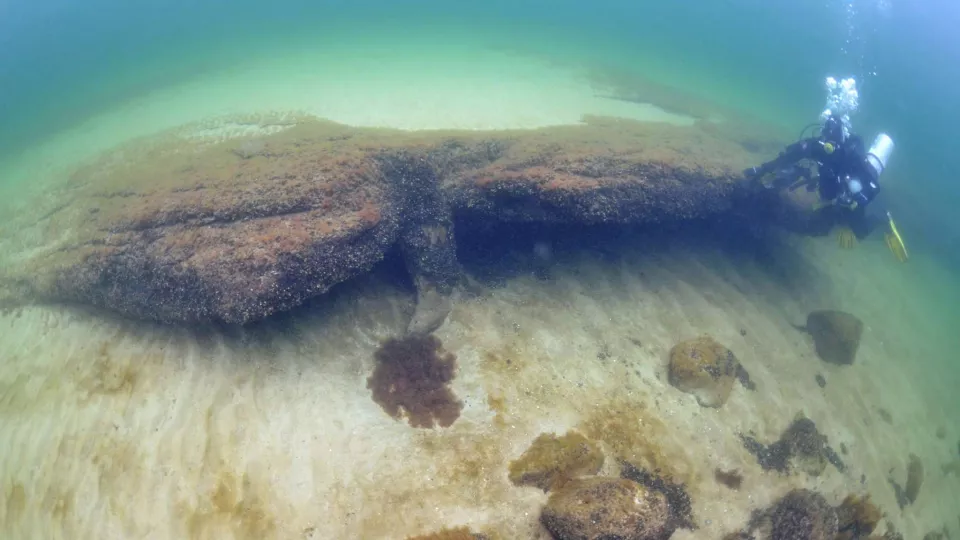Other spectacular finds include a 9,000 year-old pick axe made out of elk antlers. The discoveries indicate mass fishing and therefore a semi-permanent settlement.
”As geologists, we want to recreate this area and understand how it looked. Was it warm or cold? How did the environment change over time?” says Anton Hansson, PhD student in Quaternary geology at Lund University.
Changes in the sea level have allowed the findings to be preserved deep below the surface of Hanö Bay in the Baltic Sea.
The researchers have drilled into the seabed and radiocarbon dated the core, as well as examined pollen and diatoms. They have also produced a bathymetrical map that reveals depth variations.
”These sites have been known, but only through scattered finds. We now have the technology for more detailed interpretations of the landscape”, says Anton Hansson.
”If you want to fully understand how humans dispersed from Africa, and their way of life, we also have to find all their settlements. Quite a few of these are currently underwater, since the sea level is higher today than during the last glaciation. Humans have always prefered coastal sites”, concludes Hansson.
Publication:
Contact:
Anton Hansson, PhD student in Quaternary Geology at Lund University
anton [dot] hansson [at] geol [dot] lu [dot] se
+46 73 424 98 21
